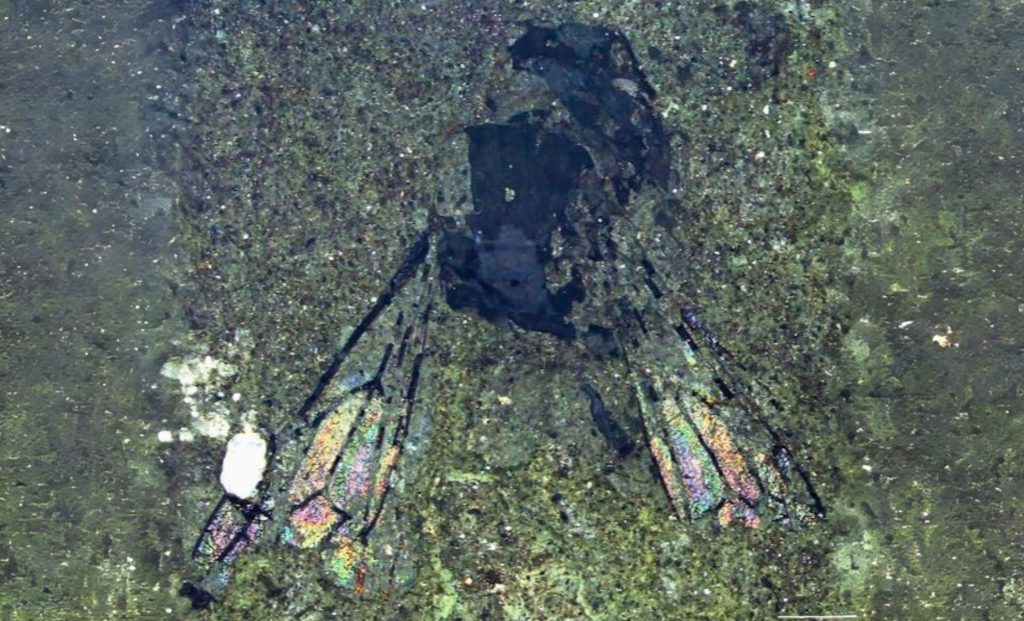Scientists Just Unearthed a 14.6-Million-Year-Old “Bee Fossil”—Its Origins Don’t Make Sense – The Daily Galaxy –Great Discoveries Channel

Scientists have unearthed a 14.6-million-year-old fossilized bee in New Zealand, the first ever found in the submerged continent of Zealandia. Preserved in volcanic mudstone, this tiny insect hints at a lost ecosystem and an unexpected evolutionary mystery. Its lineage may not be what we thought, and its role in ancient pollination remains unclear. In the lush, fossil-rich Hindon Maar Complex of New Zealand’s South Island, scientists have uncovered a 14.6-million-year-old bee fossil, the first of its kind ever found in Zealandia—the largely submerged continent beneath New Zealand. Preserved in organic mudstone, this tiny but significant insect, named Leioproctus (Otagocolletes) barrydonovani, is offering new insights into the ancient ecosystems of the region.The discovery, made near the town of Outram in Otago, comes from a site well known for its exceptionally preserved insect fossils. But unlike previously discovered beetles and flies, this bee introduces a fascinating puzzle: its lineage, survival, and the broader history of pollinators in New Zealand.The fossilized bee, a female, measures just 6.4 millimeters (0.25 inches) in length. While small, its features reveal a wealth of evolutionary history. The bee’s wing vein patterns closely resemble those of three modern Leioproctus subgenera found in New Zealand today, suggesting a long-standing connection between these pollinators and the region’s flora.Yet, despite this ancient presence, Leioproctus bees have not significantly diversified in New Zealand. Today, only 18 endemic species of the genus exist in the country—a surprisingly low number given the time span. This raises a compelling question: what prevented these bees from thriving and evolving into a more diverse array of species?New Zealand’s insect biodiversity often presents unusual patterns. The researchers behind this discovery suggest that while some insect lineages have flourished in isolation, others have remained unexpectedly limited. The fossil record hints that the Leioproctus genus may not have been in New Zealand as long as previously thought, or that something disrupted their ability to diversify.One possibility is that multiple waves of Leioproctus bees colonized New Zealand independently, rather than evolving from a single ancestral population. This means that today’s species may not be direct descendants of the fossilized bee found in Hindon Maar.“In fact, there are currently no data to indicate that the three groups of Leioproctus in New Zealand form a monophyletic group, and they themselves could represent multiple, younger invasions of the islands,” the study authors note.The newly discovered bee would have lived in a lush, mixed broadleaf forest surrounding a Miocene maar lake—a crater formed by a volcanic explosion. But the biggest question remains: what plants did this ancient bee pollinate?No pollen was found on the fossil, leaving the species’ exact ecological role a mystery. However, Pseudopanax flowers, a group of plants still found in New Zealand today, have been discovered in the same deposits. This suggests that L. barrydonovani could have visited these flowers, playing a role in a prehistoric pollination network.This discovery is more than just a fossil; it’s a clue to an ancient world that once thrived in Zealandia, a largely sunken continent that once connected New Zealand to other landmasses. By studying this tiny, long-lost bee, scientists hope to unravel how species arrived, adapted, and sometimes failed to take root in this unique landscape.As researchers continue to explore New Zealand’s ancient ecosystems, each fossil adds a piece to the puzzle of its evolutionary history—one that’s still being written, one tiny wing at a time.Hiw do they know it was a bee? They don’t. Know what I see? A fly.Kevin,The article says, “The bee’s wing vein patterns closely resemble those of three modern Leioproctus subgenera”. Even if that were all the information they had to work with, that sounds a heluva lot more reliable to me than your gut impressions. Skepticism is supposed to expose the evidence, not dismiss the evidence.Bees have four wings and long antennaWhy is this surprising? There is no fossil evidence of anything evolving into anything. Genetics prove that very closely related species interacted with each other.Comment Save my name, email, and website in this browser for the next time I comment.
© 2024 | Daily Galaxy | All rights reserved



